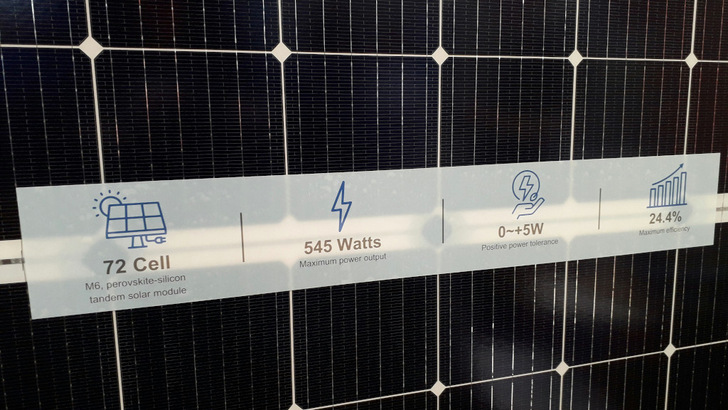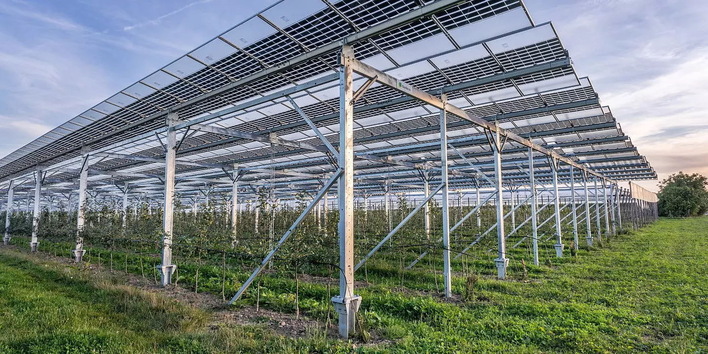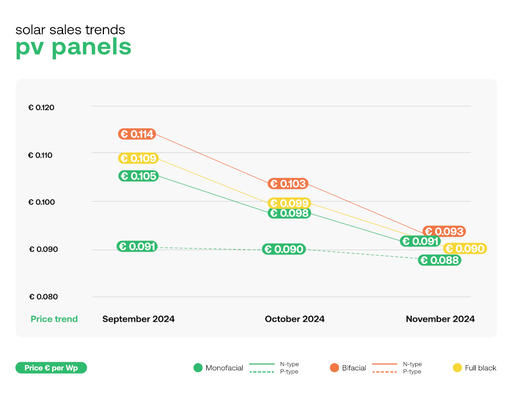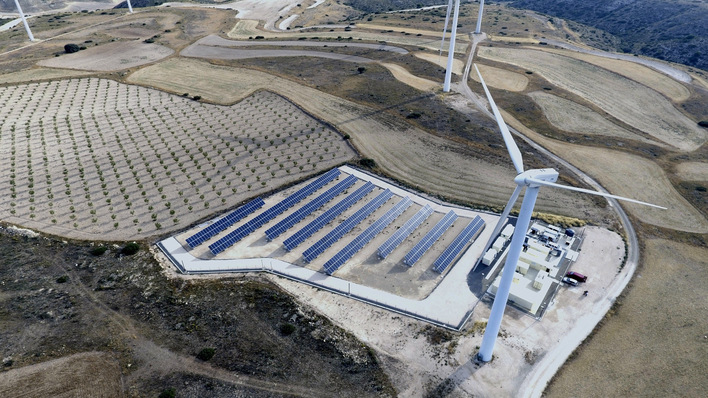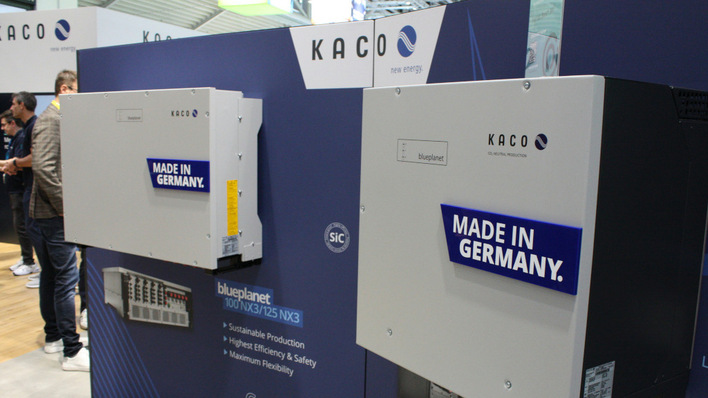As silicon wafer technology reaches its natural limits with TOPCon and BackContact cells, the solar industry is increasingly turning its attention to stacked cells and alternative materials as the next frontier. These innovations promise to boost efficiencies while addressing key challenges such as cost reduction and wafer thickness.
Read more in the first part of this series: Trends and Technologies at The smarter E Europe
Stoked about stacked
Currently, the focus is shifting towards stacked cells, which combine crystalline silicon with multiple layers of amorphous or nanosilicon, as well as perovskite cells, which offer significant potential for higher performance. Already, hand-picked HJT (heterojunction) cells are achieving efficiencies above 30 percent in laboratory settings. Meanwhile, solar modules are emerging that feature a bottom cell of crystalline silicon with a top cell composed of wafer-thin amorphous layers, delivering efficiencies on par with TOPCon cells.
Moving on from melts
Silicon is proven as a material for wafers and cells and is easy to handle in mass production, even at high throughput rates. However, the high temperatures required for the silicon melt for ingots demand significant investment in cell factories. This high capex stands in the path of new factories on a scale of gigawatts per year. Against this backdrop, scientists and engineers are working feverishly to produce wafers no longer from melts and ingots, but by depositing gaseous silane onto a substrate directly.
Read more in the second part of this series: The smarter E: TOPCon and BackContact dominate trends
Ultra-thin cells not far off
Such wafers would no longer be 140 or 160 micrometres, but less than 50 micrometres thick. It would no longer be necessary to saw cells from ingots , which would also significantly reduce silicon losses, particularly in the sawing slurry. However, ultra-thin cells require entirely new technologies for moving and processing during production. The weight alone is enough to bend these slender cells. They must remain vertical throughout the production process.
Glass-glass becoming the standard
Ultra-thin cells can only be used in glass-glass modules where they are in the neutral zone, i.e. free from bending forces. Otherwise they would soon crumble. Because the trend is towards larger modules with a surface area of up to three square metres, module manufacturers are reducing the size of the glass. Otherwise, the modules would be simply too heavy. Transportation and installation would have to be by crane. Some large solar modules with 1.6-millimetre thick glass have already had their official launch. Because the strength of the glass is closely tied to its quality, the risk of breakage is very high.
Increasing requirements for solar modules
Problems with very thin lenses
The problem is not quite so noticeable with solar modules of less than two square metres, although here too there are enormous differences in quality. The support on the base frames also plays an important role. If very large double-glazed modules with thin glass are mounted on trackers, for example, the modules act like sails in the wind. It is not uncommon for the clamp, which is subject to a great deal of stress, to fail entirely. Without proper support, the breakage of the module is inevitable. Solar parks have already noticed a third or more of modules suffering glass breakage within the first year of installation.
Read more: Europe needs new cell and module plants
Invisible breaks
Glass breakage is very difficult to diagnose. It frequently remains inconspicuous for a period of time, and is even overlooked during on-site inspections. It can take a while for moisture to penetrate the crack and reduce performance. Inverters are typically the first to indicate a problem, either by switching off due to insufficient insulation resistance or by only turning on later in the day when the sun is higher. This issue bears similarities to the known embrittlement of the backsheets in modules from 2010 to 2012.
Gigafactories for Europe – How large-scale production could return
Perovskite on the horizon
Looking ahead, the industry is closely watching the development of perovskite-based tandem solar cells. However, as with any emerging technology, there are significant challenges to address - especially in scaling laboratory achievements into commercially viable solutions.
The next article will delve into the ongoing advancements of silicon-perovskite tandem cells and the obstacles still to be overcome before they can be mass-produced. (HS/TF)
Stay up-to-date and register for the pv Europe newsletter.


